How to Prepare Steamboat/ Hot Pot Feast
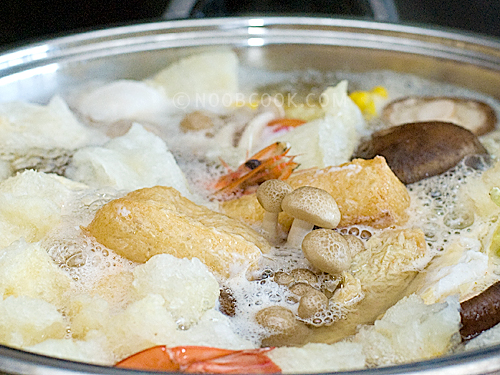
Cooking this festive season? Check out: Chinese Lunar New Year Recipes.
With Chinese New Year Eve (CNY) reunion dinner (团圆饭) just around the corner, this is now a good time to storm the supermarkets and wet markets to stock up on fresh foods for that sumptuous yearly feast. One of the most common meals to enjoy on CNY eve is a hotpot meal (火锅), more commonly known as “steamboat” in Singapore. Although it is very commonly consumed on CNY eve, hotpot/steamboat is also popular to serve during social gatherings throughout the year.
Why hotpot/steamboat is an ideal meal for CNY and social gatherings:
– It is so easy to prepare, it involves more of logistics (gathering ingredients) rather than any expertise in cooking. Hence anyone can host a fail-proof, yummy meal.
– You can easily prepare a meal for as few people (e.g. 2) or as many people (like 20) as you like simply by adjusting the quantity of ingredients.
– You can do hotpot again over the next 1-2 days with the leftovers, especially useful when many eating places, markets and shops are closed during the first few days of CNY.
– You get to sit around the table for a long time as you cook your own food, hence promoting interaction and bonding.
– It’s a healthy meal, as you are enjoying the food which has been briefly cooked in hot broth. The food is not greasy at all.
– It is great for pot luck. Just make sure you coordinate who are bringing which ingredients so that there is no duplication.
– It keeps you warm if you are enjoying it in winter. If you’re staying in a hot tropical country like Singapore, take it as a free detox suana session, just down lots of cold beer (or cold drinks) to stay cool ;p
– You can choose almost any ingredients for your hotpot based on your preference and budget. It can be really lavish (with lobster, abalone etc) or really simple. Either way is totally delicious.
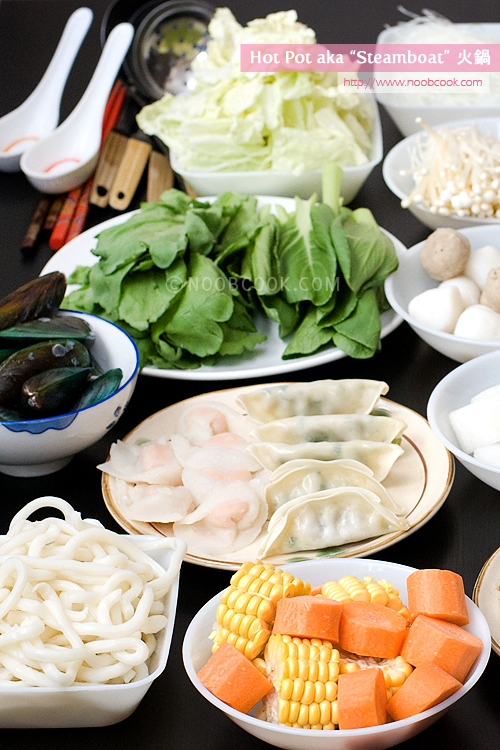
Ingredients for a Sumptuous Hot Pot (Steamboat) Feast
Steamboat for Chinese New Year
Traditional beliefs:
– Try to prepare excess food with the intention for leftovers* for the following 1-2 days. Do not say things like “let’s try to finish all the food”. The Chinese prefer to have leftovers which symbolizes lots of savings in the coming year. You can use the leftovers to make more hotpot meals or other dishes in the coming days.
– Refrain from bitter foods such as bittergourd and also sour foods as they are considered inauspicious.
– Some cultures believe that having cooked rice on the table is a must (whether you eat it or not), as it is a symbol of prosperity.
* Do note that certain foods (such as tau pok aka stuffed bean curd puffs and fresh yong tau foo pieces) do not keep well overnight in the fridge, as they easily become sour the next day.
Auspicious foods:
– Prawns are a symbol of happiness (sounds like “ha” in Cantonese, hence 笑 “哈哈”).
– Long noodles signify longevity. Hence do not cut them to shorter lengths.
– Fish & abalone is a symbol of abundance (年年有余/年年包有余). You can use either thin fish slices or yong tau foo (which are pieces of food with stuffed fish paste).
– Dumplings are a symbol of wealth because they resemble ingots (yuan bao 元宝; ancient Chinese currency).
If you would like to prepare a simple hotpot meal but are clueless about what to do, check out the following guide to get you started.
1) Equipment
A) Hotpot
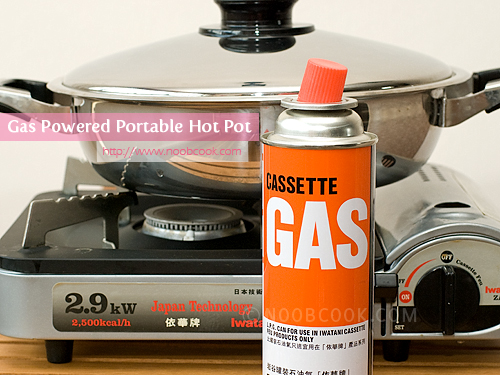
A gas powered hot pot
The basic equipment is of course a hotpot. There are basically two different types to choose from – (i) an electrical hotpot (comes with wires and cables) or (ii) one with gas canister (stand-alone device with no wires; pictured above). I opt for the latter because I have a phobia of tripping over wires and spilling all the hot soup and ingredients over. You can also opt for a hotpot with a divider if you wish to have two different soup bases. Some people also uses the traditional steamboat using charcoal (the type you see in fish head steamboat/鱼头炉), which is becoming rarer in modern homes as you need to prepare the charcoal.
B) Cutlery
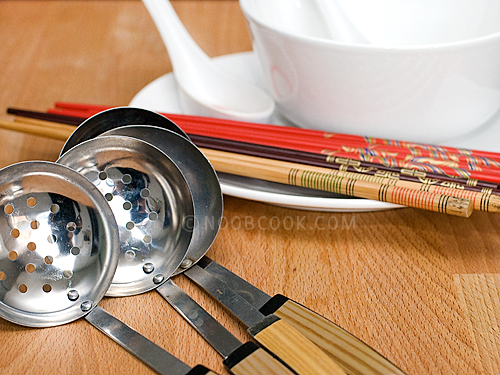
Cutlery (front – slotted ladles) for hot pot
Use soup and slotted ladles (a ladle with holes; pictured) to cook foods. Do provide an extra pair of chopsticks specifically for cooking raw meats.
You can also place a communal plate in the center of the table to scoop out the cooked foods so that they won’t overcook in the pot.
The other usual utensils (chopsticks, plate, soup bowl, soup spoon) apply.
2) Soup Bases
(i) Home-brewed – Just like how you can be really lavish or simple with the ingredients, the same goes for the soup bases. You can use Chinese clear soups as a soup base or brew your own chicken broth.
(ii) Ready Made – Use instant stocks (chicken cubes, concentrated instant soup stock) for a fuss free soup stock. When using instant stocks, you can focus on a theme (example ma la, miso, kimchi, tom yum) if you like.
(iii) “No-fuss” plain broth – This plain broth is what I personally like best. I learnt this from my friend’s grandmother who taught us that it is not necessary to brew a special soup base if you don’t have time since the soup will become really sweet by the end of the meal due to all the ingredients that are cooked in it. Simply start the steamboat with plain boiling water, carrots (peeled and cut to large chunks) and sweet corn (cut to large chunks), and at the end of the meal, you soup will be really sweet and you can also eat the sweet corn which will become juicy. You can also add a chicken cube to enhance the taste of this “no-fuss” broth.
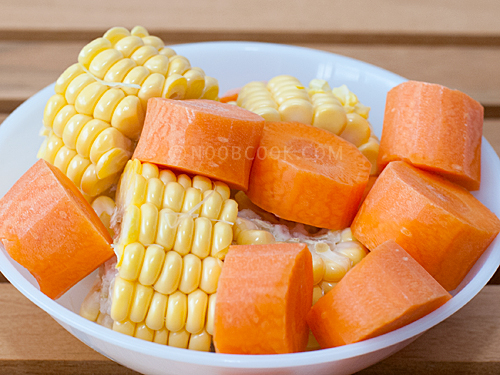
Corn and carrot for the “no fuss” soup broth
Remember to have on standby a flask of hot water/hot broth (I’m using a portable thermal flask) to top up the soup as the hotpot session progresses.
3) Main Ingredients
A) Sliced Pork or Beef
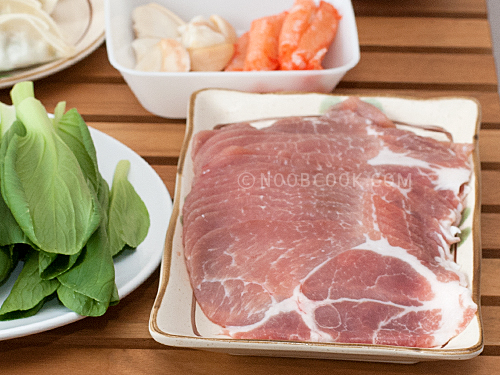
Pork shabu shabu
I love shabu shabu cuts of pork and beef, which is a Japanese style of thinly sliced meats which are perfect for hotpot/steamboat. You can also use the “sukiyaki” cut. Due to the extremely thin slices (which are cut by machines), the meat will be cooked within seconds of dipping in hot broth. Because they are usually sold frozen (and vacuum sealed), I buy them in advance and store in the freezer.
B) Fish & Other Meats

Salmon slices
Besides pork and beef, other common additions include thinly sliced pig’s liver, thinly sliced fish (white fish or salmon – pictured above) and boneless chicken fillet (cubed or thinly sliced).
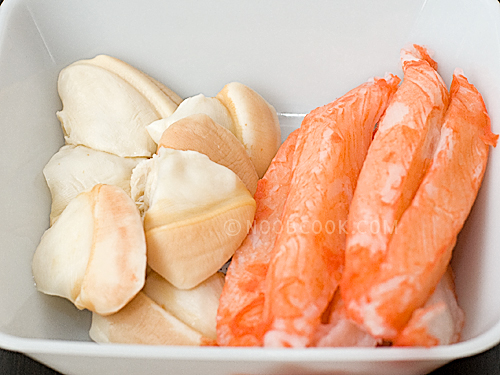
Left: Pacific Clams (鲍贝/bao bei) & Right: Imitation Crab Sticks
Popular seafood for CNY hotpot/steamboat include abalone (thinly sliced), fish maw, prawns, imitation crab sticks (which are actually made of fish not crab) and pacific clams.
To prepare fish maw, soak them in boiling water (covered) until softened. Discard the water and use kitchen scissors to cut to smaller pieces. The fish maw will be rid of its “greasy” smell, and become soft and puffy. If the fish maw you bought is the harder variety, you can continue soaking in a new round of hot water until dinner time. They will be cooked to soft perfection in no time at all during the hotpot session.
You can also add shell fish such as mussels (soak in salted water for a few hours to get rid of sand), shucked oysters, cockles, squid/sotong (cut to rings), crayfish etc
C) Vegetables
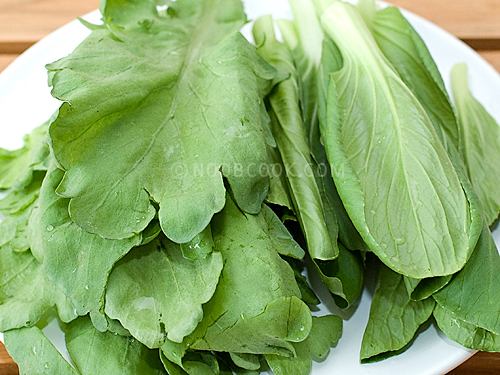
Left: “Tang Oh” and Right: Baby bok choy
One of the most popular vegetables for hotpot is tang oh (Garland Chrysanthemum). During CNY season, supermarkets and wet markets are well stocked with this vegetable.
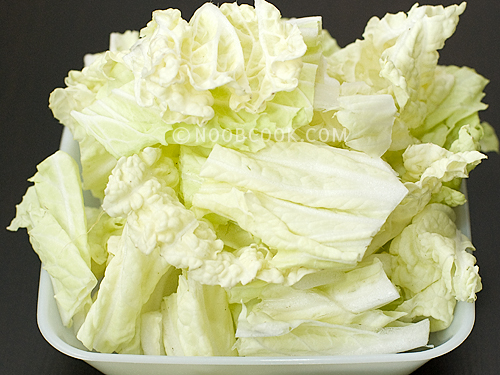
Napa Cabbage (often labelled as “China Wong Bok” at NTUC)
Other vegetables you can add: baby bok choy (xiao bai cai, 小白菜) and napa cabbage.
The vegetables only need to cook for a few seconds in boiling water so don’t overcook them! I take out the tang oh almost immediately after dipping them in the hotpot soup to enjoy them while they are still crunchy.
D) Mushrooms
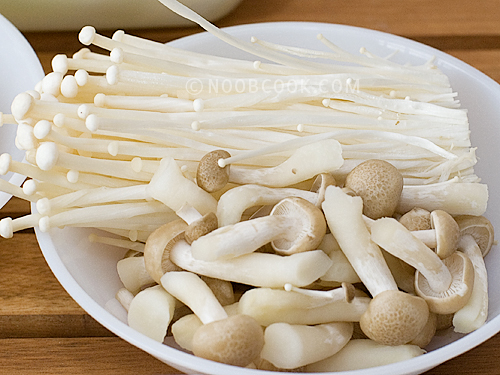
Top – Golden/Enoki mushrooms (金针菇), Bottom – Hon-shimeji mushrooms
You can use an assortment of mushrooms such as shiitake, button and hon-shimeji (stalks trimmed) in your hotpot. Some people also like to add canned button mushrooms. My favourite is the enoki mushrooms, aka golden mushrooms (金针菇/ jin zhen gu), and they not only sound auspicious but cooks quickly too.
E) Non-meats

Firm tofu which is ideal for steamboat or soup
Non meat choices include tofu (buy firm tofu which is recommended for steamboat/soup, cut to cubes), corn, carrots and daikon (cut to large chunks), tomato (cut to large wedges), and eggs. If you are adding eggs to your hotpot, add them at the very end because it will cause the soup to be murky. My family cooks individual portions of eggs (1 egg per person) in a slotted ladle. Try not to break the yolk – if you love runny egg yolk like I do, you will love this nice finale to a yummy hotpot meal.

Cooking a whole egg at the end of the hot pot session
F) Carbohydrates
Some families believe that having cooked rice is a must as it is a symbol of good luck during CNY whether or not you eat it.
Besides rice, you can also prepare long strand noodles which is a symbol of longevity (hence do not cut them to shorter strands). Popular hotpot noodles include udon, spinach noodles, tang hoon (aka glass/cellophane noodles/粉丝/冬粉; soaked in water for a few minutes to reconstitute the noodles before using).
G) Meatballs
Meatballs are a wonderful addition to hotpot. You can use fish balls, beef balls, vegetable balls, chicken balls or cuttlefish (sotong) balls.
H) Dumplings/Wontons
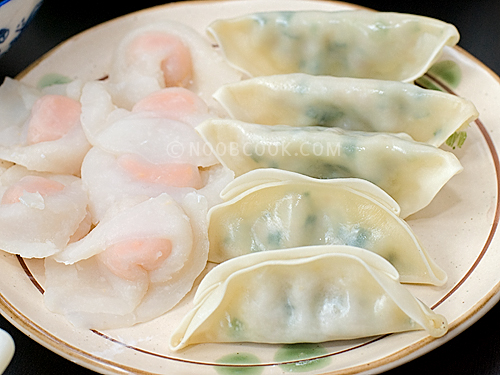
Left: fish dumplings, Right: chive dumplings
Due to its shape which resembles the ingot (yuan bao/元宝; ancient Chinese currency), dumplings such as jiao zi and fish dumplings (“fish ear”) are common additions to hotpot during CNY.
I) Yong Tau Foo 釀豆腐
Yong Tau Foo literally means stuffed bean curd with fish paste, though it is basically a large variety of food (not just beancurd) stuffed with fish paste.
If you like variety in your hotpot/steamboat, you can add an assortment of yong tau foo pieces. I think the most popular tong tau foo for adding in hotpot is tau pok (bean curd puffs).
J) Dipping Sauces
(i) Ready Made Sauces. There is a wide variety of sauces you can purchase off the shelves. In Singapore, a popular brand of chilli sauce for hotpot is Dancing Chef Suki Sauce (pictured below). Many people think that it resembles the chilli sauce served at Coca Suki Restaurant. You can add toasted sesame seeds and chopped coriander to the sauce for more taste. It is a sweet and spicy sauce. Besides chilli sauce, you can also purchase peanut sauce.
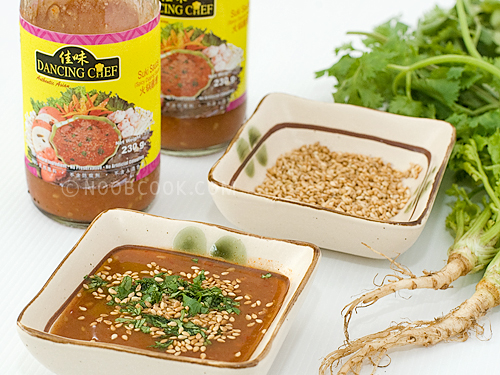
Dancing Chef Suki Sauce – Perfect for Steamboat
(ii) For chilli padi lovers. You can also make your own quickie chilli padi sauce (pictured below) by using cut chilli padi, lime juice, minced garlic, soy sauce and sesame oil.
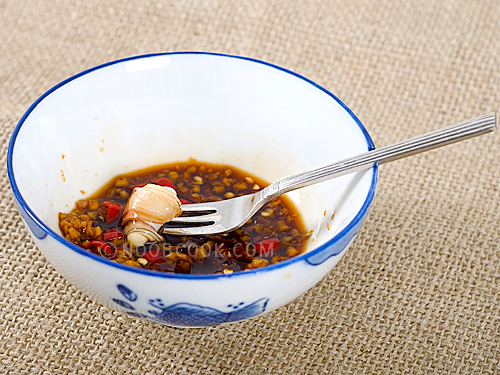
Quick Chilli Padi Sauce (recipe here)
(iii) Home blend. You can blend your own chilli padi dip (check out the recipe here) by combining chilli padi, garlic, sesame oil, lime juice and light soy sauce in a mini food processor. You can also make your own peanut paste by mixing tahini or peanut butter with sesame oil, hot water and toasted sesame seeds.
K) Drinks
(i) If you’re enjoying a hotpot in winter, you can wash down the food with some warm sake or liquor (such as choya, vodka etc).
(ii) If you are enjoying in a hot tropical place like Singapore, sans air-conditioning, you can serve cold drinks such as beer (my favourite choice, haha), soft drinks or iced tea.
(iii) A pot of Japanese green tea (hot or cold) is always a delight during any meal to aid digestion.
Cooking this festive season? Check out: Chinese Lunar New Year Recipes.
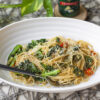
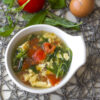

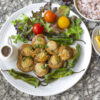
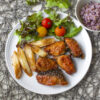
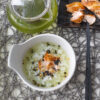
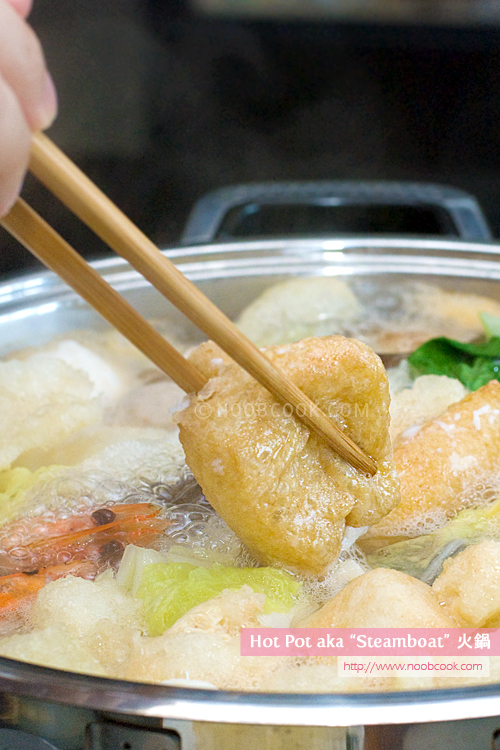
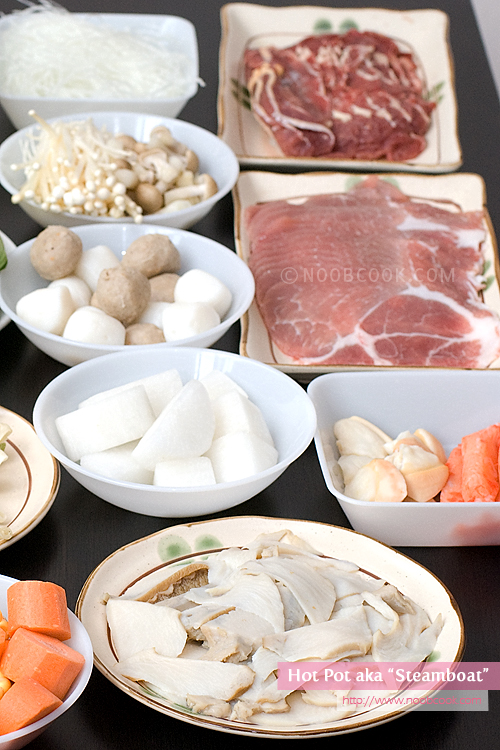
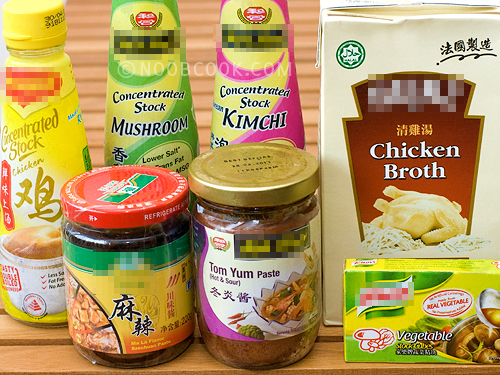

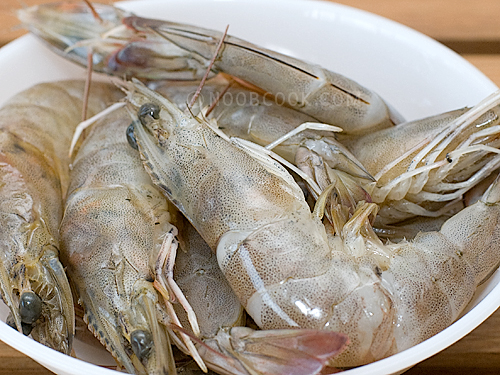
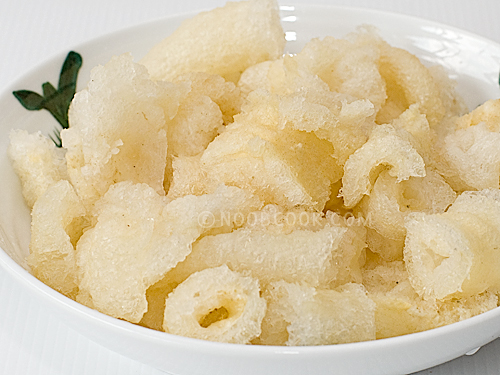

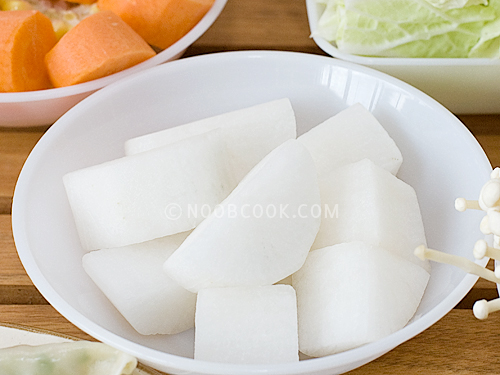
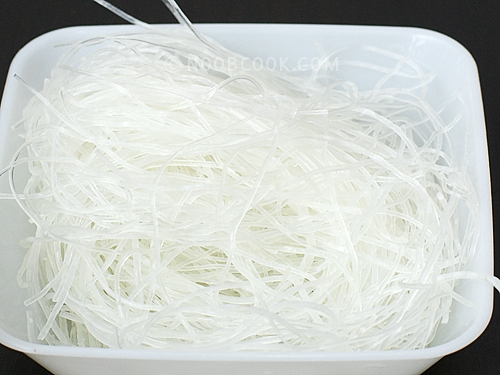


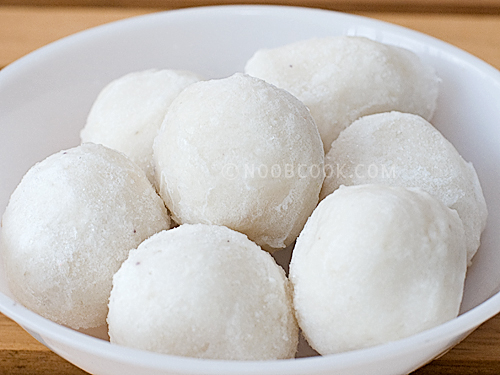
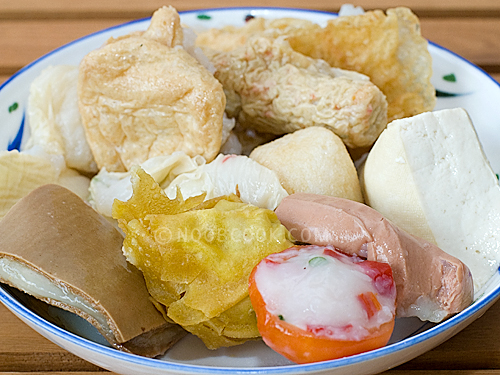
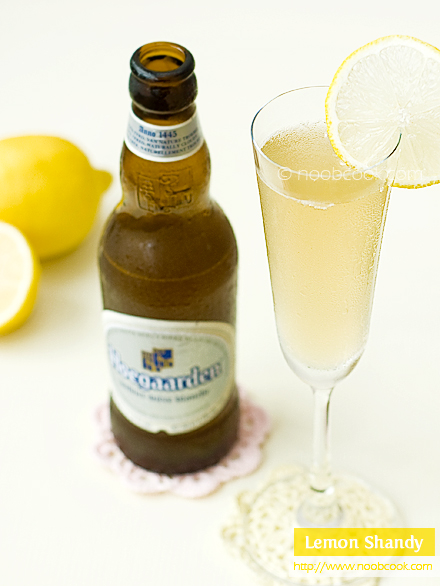



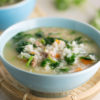

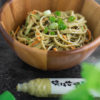
Pingback: Celebrate Lunar New Year with NTUC Fairprice | Mabel Tan
Pingback: Day 10 Happy Occasion & 火锅 | MEANINGS AND MUSINGS
Where can I get the peanut sauce? Also from dancing chef?
No it’s actually Japanese sesame sauce, Mizkan brand I think. If you want pure peanut, you can use tahini.
Pingback: Lunar New Year: Reunion got easier with NTUC FairPrice | Mabel Tan
lookie here
Pingback: Steamboat Experience and a Happy Tummy Ever After! – My Stay in Malaysia
Pingback: 【Pass那个辣椒酱给我一下~】大马人吃火锅时肯定会遇到这10种人,不瞒你说遇到#4最幸福! - NOODOU
Pingback: How to Hot Pot in Guilin, China - The Places We Live